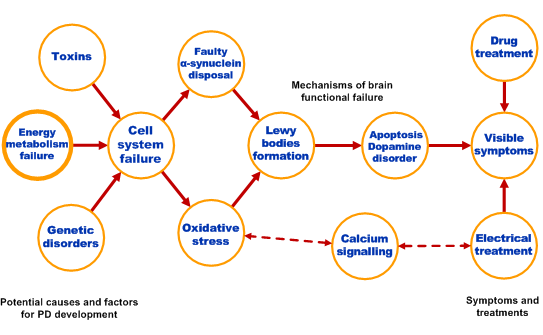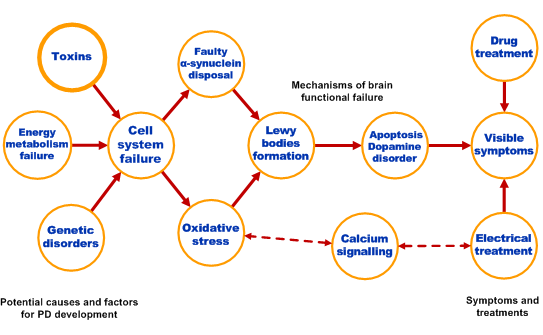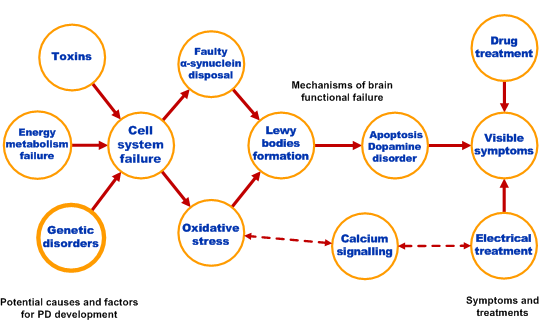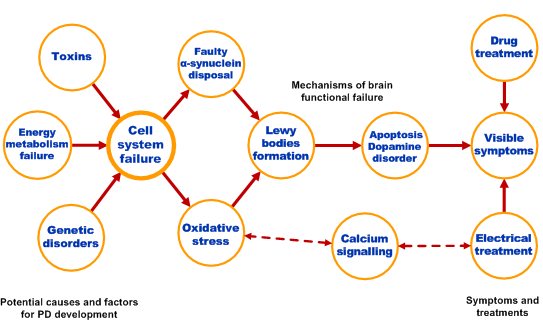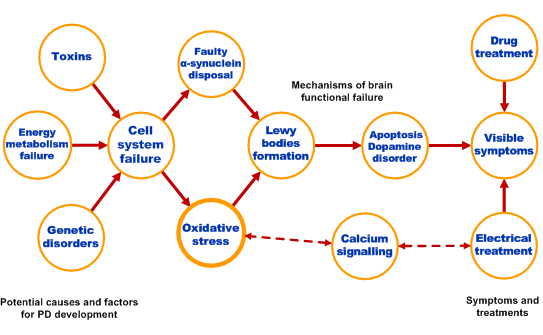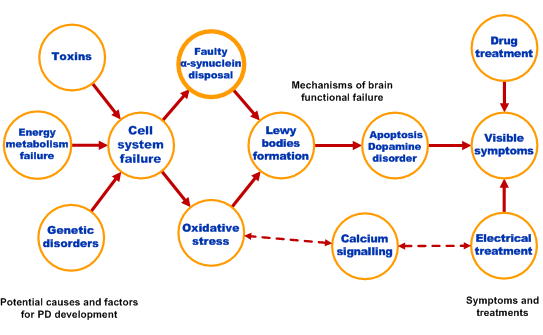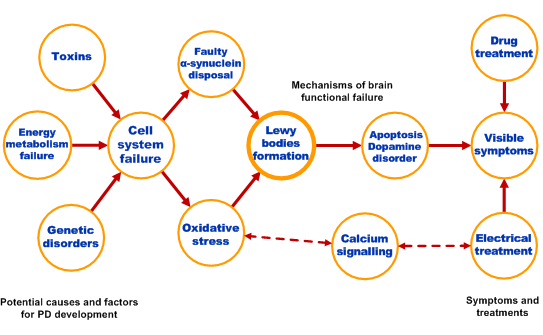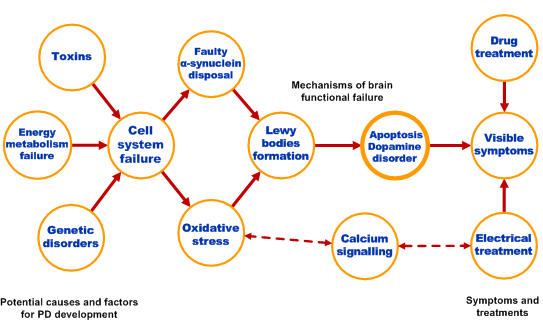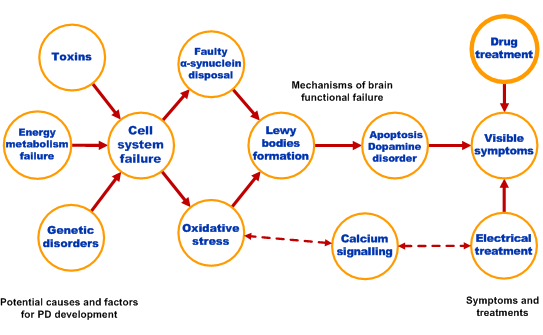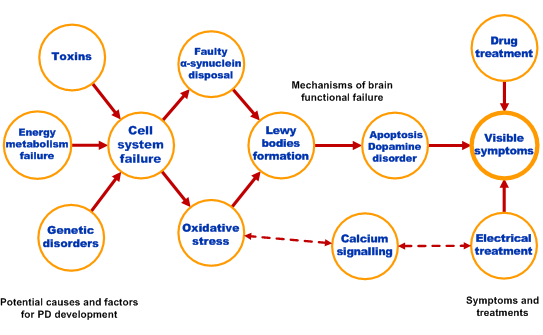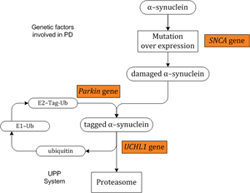Diagram of the Systems of Parkinson's disease
(click in the designated areas for further information)
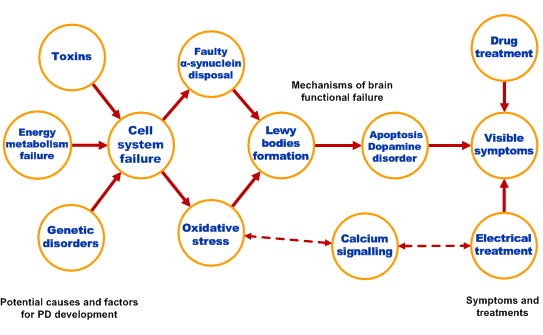
Genetic disorders
Overview Genetic studies are currently the most active research area for PD, even though only a small subset of sufferers has a familial genetic link to the disease. In the few families with early onset Parkinson's disease or juvenile Parkinson's disease, the disease is thought to be transmitted via mutations in the genes encoding proteins such as α-synuclein and parkin. However, in the majority of families affected by Parkinson's disease, the disease appears to skip generations, irrespective of the age of onset. As a consequence the familial forms of this disease are considered to be caused by interaction between one or more genes and the environment. A systems consideration for the genetic causes of PD is the fact that gene disorders can cause the accumulation of damaged a-synuclein both from an imbalance in a-synuclein production (overexpression of SNCA gene, coding for a-synuclein) and from a perturbation of the protein disposal systems (parkin or UCHL1 genes which are involved in the UPP). The parkin gene may however have other duties in toxic protection and promoting dopamine activity. A systems integration of genetic disorders to other cellular processes is thus required in order to correctly assess genetic implications in PD. [Top] |
Research Modelling of genetic deficiencies in disease development is a promising approach to improve our understanding of how the underlying mechanisms of cellular [Top] |
Contact point Please contact us for information on how to be listed here. [Top] |
Selected References P. H. Kahle and C. Haass. How does parkin ligate ubiquitin to Parkinson's disease? In EMBO reports, 5(7):681-685, 2004. doi: 10.1038/sj.embor.7400188. K. McNaught, C. Mytilineou, P. Shashidharan, R. Baptiste, J. Yabut, P. Jenner, and C. W. Olanow. Impairment of the ubiquitin-proteasome system causes dopaminergic cell death and inclusion body formation in ventral mesencephalic cultures. Journal of Neurochemistry, 81(2):301-306, 2002. doi: 10.1046/j.1471-4159.2002.00821.x. [Top] |

